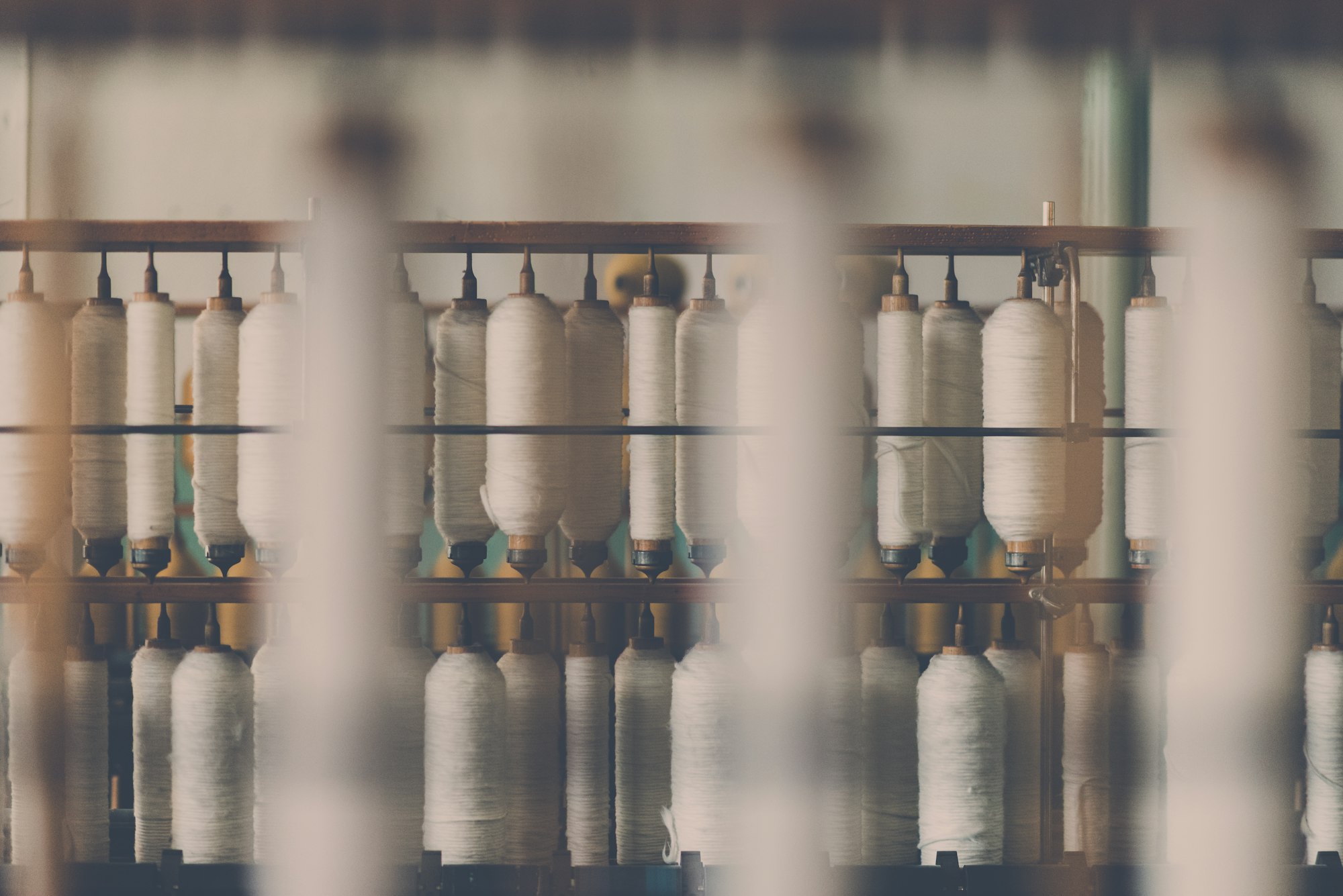Sat - a discourse on cotton

Emily and Lucy may recall that 22 years ago, on the way to North Uist we stopped in at New Lanark, the mill village set up by Robert Owen in the early 1800s. Certainly walking down the steep slope from the car park with its panoramic views brought much of it back to us.
New Lanark is a cotton mill and it stills spins today, these days there is more money in spinning wool for home use and the craft weaving trade though. We end up buying a couple of balls, look out for interesting Willy hats when autumn comes around. The mill a fully working spinning mule which is very impressive to watch. This single large mule has 382 spindles, not only does it spin much. much faster than a single woman on a spinning wheel but it does the work of 382 of them! Incidentally, before the industrial revolution spinning by hand on a spinning wheel was mainly the work of women whereas hand weaving was mainly a male occupation. Should a women get married then maybe her husband earned enough for her to cease having to work and to become housewife and mother, those who remained unmarried we generally consigned to a lifetime of being a spinster.
Spinning is a complex operation and it must have been incredibly difficult to design machines to do it well. The earliest, Hargreaves' spinning jenny was hand operated but had the advantage of spinning 8 spools simultaneously and had a moving bar that would draw out the threads thus producing fairly fine yarn. Arkwright's water frame replaced the hand power with water and upped the spindle count but used rollers and didn't draw the thread as fine as the jenny. It was faster and produced good, but fairly thick yarn. Apparently Samuel Crompton accidentally stumbled upon a way to combine both different action machines into a single machine, two dissimilar beasts giving rise to one with the best qualities of both, hence the name spinning mule. It is impressed to watch the huge long bars move out drawing the fibres off the back roller and simultaneously spinning them, at about 3/4 way through this forward movement the back roller stops rotating and the thread is just stretched and twisted. Then the front bar moves swiftly back to meet the back bar during which time the cones on the front bar, onto which the yarn is wound, rotate to take up the newly spun slack and the process is ready to repeat.
Of course to be efficient the machines need to be stopped as little as possible. I shudder to imagine the injuries to the child "scavengers" employed to scamper between the moving rollers to tidy broken ends, clean accumulated cotton dross etc. Incredibly noisy, dusty, everything and everyone coated with the fine cotton lint, lungs included, machinery that lacked basic safety mechanisms and stopped for nothing, it must have been Hell.
One disappointment with New Lanark was the lack of context for the importance of the industrial revolution. Often we think of it in terms of steam but mills like New Lanark were essentially water powered, only using the costly steam power as a backup when water power was inadequate, such as times of drought. However it is spinning and weaving, particularly spinning that is the real heart of the industrial revolution. It's the huge mills that started the switch from rural to urban living and from agriculture to factory culture.
Without the revolution in textiles in the beginning of the 19th century there would have been no Manchester slums to provide Marx and Engels with the basis of the communist manifesto. Without the improvements in spinning making cotton preferable to wool there would have been no need for the US southern states to plant vast estates of cotton fields and no need to conscript slave labour from Africa, and so no impetus for the US Civil War, not the festering struggle for racial equality that has lingered ever since. Remember too, much of Gandhi's focus was on the right for Indians to produce home-spun cotton.
Today's homework question "The spinning mule and flying shuttle have had more impact upon human politics than any other of mankind's inventions" - Discuss.
New Lanark, of course, is of interest because Robert Owen was a social reformer who actively strove to improve the lot of the worker through education, leisure and shorter working hours. This was a time when huge fortunes were made through exploitation of the poor so New Lanark was a bold social experiment which appears to have between a huge success. Perhaps out of the choices of Hell, New Lanark was one of the better ones.
Lanark itself is not such a bold experiment and a fairly mundane town. Like so many Scottish lowland towns alcohol seems to be a problem. That said the homeward route was deliberately chosen to take us via the town of Strathaven which has a brewery (of the same name) and so we stopped at a local hotel to try a pint. One problem of this area and it's proximity to Glasgow is the impenetrability of the accent. You know that at least some of the words presented to you may possibly be ones included in the Queen's English but any attempt to parse the sound steam to determine which sets of phonemes may be familiar is impossible to anyone born south of the border. The only hope is to study the universal communication system of body language and nod/shake as you hope is the appropriate response.
We decide to give the singer down at the lounge bar on site here a miss. No real reason, the beer isn't something we would choose to drink and it sounds LOUD. We're getting old!